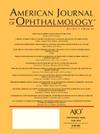Glaucoma Surgery Comparison: SIBS Microshunt vs. Gelatin 45um Microstent vs. Trabeculectomy as Primary Surgical Interventions: Microshunt vs. Gelatin 45um Microstent vs. Trabeculectomy.
IF 4.1
1区 医学
Q1 OPHTHALMOLOGY
引用次数: 0
Abstract
PURPOSE Compare surgical success, risk factors and post-operative course of the SIBS microshunt, gelatin 45μm microstent, and trabeculectomy with mitomycin C (MMC) as a primary surgical intervention in patients with glaucoma. We present a multicenter,12-month, retrospective, non-randomized, interventional case series. DESIGN Multicenter,12-month, retrospective, non-randomized, interventional case series. METHODS Consecutive patients with glaucoma on maximally tolerated medical therapy received either primary SIBS microshunt, gelatin 45um microstent, or trabeculectomy with MMC as a stand-alone procedure at one of six participating centers (Canada, Italy, Netherlands, Belgium, Singapore, Dominican Republic) from August 2015 to August 2020. Main outcome measures were proportion of eyes at 12-months with (1) no two consecutive IOPs > 17 mmHg or clinical hypotony (IOP < 6 mmHg with a loss of> 2 lines of vision), without (complete) or with (qualified) glaucoma medications; and (2) ≥20%reduction from baseline IOP. Secondary outcomes included IOP thresholds of 14 mmHg and 21 mmHg, median IOP, medications, risk factors, post-operative interventions, complications, and reoperations. RESULTS Records from 577 eyes from 521 patients with SIBS microshunt (n=235), gelatin 45μm microstent (n=201) or trabeculectomy (n=141) were included. Baseline decision IOP was lower in the SIBS group and baseline number of glaucoma medications was also lower in the SIBS and trabeculectomy groups. After 12-months follow up, complete success occurred in 68.8% of patients with SIBS microshunt, 46.2% with gelatin 45μm microstent and 58.0% with trabeculectomy (p=0.0002). Qualified success occurred in 89.7%, 70.1% and 83.6% of eyes, respectively (p=0.0002). In the multivariate analysis, eyes receiving a gelatin 45μm microstent relative to SIBS microshunt (HR 2.0; 95%CI 1.5 - 2.7), trabeculectomy relative to SIBS microshunt (HR 1.6; 95%CI 1.2 - 2.2), or intra-operative MMC dose less than 0.4mg/ml (HR 1.5; 95%CI 1.1 - 2.0) was significantly associated with failure. Complications occurred in 33.6%, 42.8% and 56% of eyes (p= 0.0001); needling in 12.3%, 29.9% and 22% (p<0.0001); revisions in 10.6%, 8.5% and 8.5% (p=0.68); and reoperations in 5.5%, 13.9% and 7.8% (p<0.001) with SIBS microshunt, gelatin 45μm microstent, or trabeculectomy, respectively. CONCLUSION Overall, patients with the SIBS microshunt achieved higher success rates compared to both trabeculectomy and the gelatin 45μm microstent group, with fewer postoperative complications, interventions, and reoperations for glaucoma.青光眼手术比较:SIBS微分流术、明胶45um微支架、小梁切除术作为主要手术干预措施:微分流术、明胶45um微支架、小梁切除术。
目的比较SIBS微分流、明胶45μm微支架和丝裂霉素C (MMC)小梁切除术作为青光眼患者的主要手术干预措施的手术成功率、危险因素和术后病程。我们提出了一个多中心、12个月、回顾性、非随机、干预性的病例系列。设计:多中心、12个月、回顾性、非随机、干预性病例系列。方法:2015年8月至2020年8月,在六个参与中心之一(加拿大、意大利、荷兰、比利时、新加坡、多米尼加共和国),接受最大耐受药物治疗的连续青光眼患者接受了原发性SIBS微分流术、明胶45um微支架或MMC小梁切除术作为独立手术。主要结局指标是12个月时(1)没有连续两次IOP低于17 mmHg或临床低眼压(IOP < 6 mmHg并失去> 2条视力线),没有(完全)或(合格)青光眼药物的眼睛比例;(2) IOP较基线降低≥20%。次要结局包括眼压阈值14 mmHg和21 mmHg、中位眼压、药物、危险因素、术后干预、并发症和再手术。结果521例SIBS微分流(235例)、明胶45μm微支架(201例)、小梁切除术(141例)577只眼的记录。SIBS组的基线决定IOP较低,SIBS组和小梁切除术组的青光眼药物基线数量也较低。经过12个月的随访,SIBS微分流的成功率为68.8%,明胶45μm微支架的成功率为46.2%,小梁切除术的成功率为58.0% (p=0.0002)。合格率分别为89.7%、70.1%和83.6% (p=0.0002)。在多变量分析中,接受凝胶45μm微支架的眼睛相对于SIBS微分流(HR 2.0;95%CI 1.5 - 2.7),小梁切除术相对于SIBS微分流术(HR 1.6;95%CI 1.2 - 2.2),或术中MMC剂量小于0.4mg/ml (HR 1.5;95%CI 1.1 - 2.0)与失败显著相关。并发症发生率分别为33.6%、42.8%和56% (p= 0.0001);针刺发生率分别为12.3%、29.9%和22% (p<0.0001);10.6%、8.5%和8.5%修正(p=0.68);SIBS微分流、明胶45μm微支架或小梁切除术的再手术率分别为5.5%、13.9%和7.8% (p<0.001)。结论:总体而言,SIBS微支架组患者与小梁切除术组和明胶45μm微支架组相比成功率更高,青光眼术后并发症、干预措施和再手术较少。
本文章由计算机程序翻译,如有差异,请以英文原文为准。
求助全文
约1分钟内获得全文
求助全文
来源期刊
CiteScore
9.20
自引率
7.10%
发文量
406
审稿时长
36 days
期刊介绍:
The American Journal of Ophthalmology is a peer-reviewed, scientific publication that welcomes the submission of original, previously unpublished manuscripts directed to ophthalmologists and visual science specialists describing clinical investigations, clinical observations, and clinically relevant laboratory investigations. Published monthly since 1884, the full text of the American Journal of Ophthalmology and supplementary material are also presented online at www.AJO.com and on ScienceDirect.
The American Journal of Ophthalmology publishes Full-Length Articles, Perspectives, Editorials, Correspondences, Books Reports and Announcements. Brief Reports and Case Reports are no longer published. We recommend submitting Brief Reports and Case Reports to our companion publication, the American Journal of Ophthalmology Case Reports.
Manuscripts are accepted with the understanding that they have not been and will not be published elsewhere substantially in any format, and that there are no ethical problems with the content or data collection. Authors may be requested to produce the data upon which the manuscript is based and to answer expeditiously any questions about the manuscript or its authors.

 求助内容:
求助内容: 应助结果提醒方式:
应助结果提醒方式:


